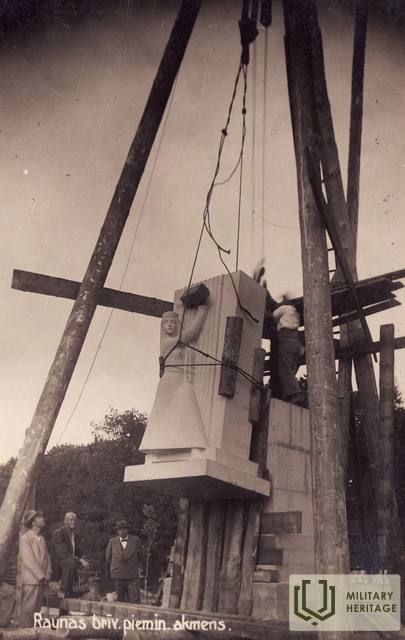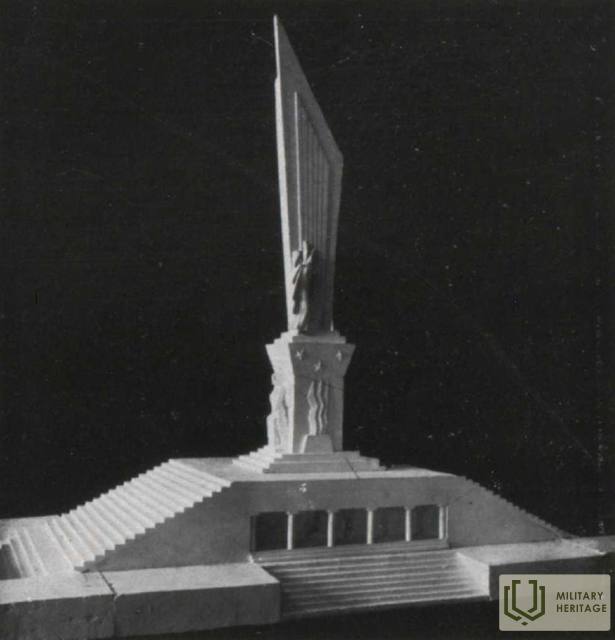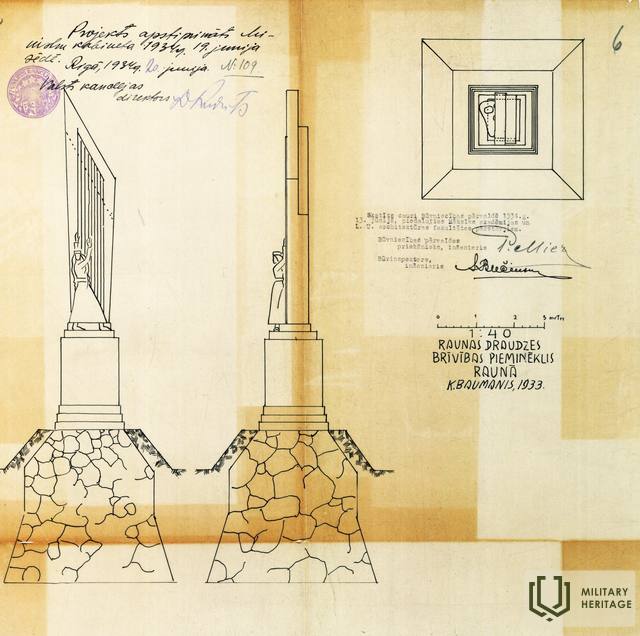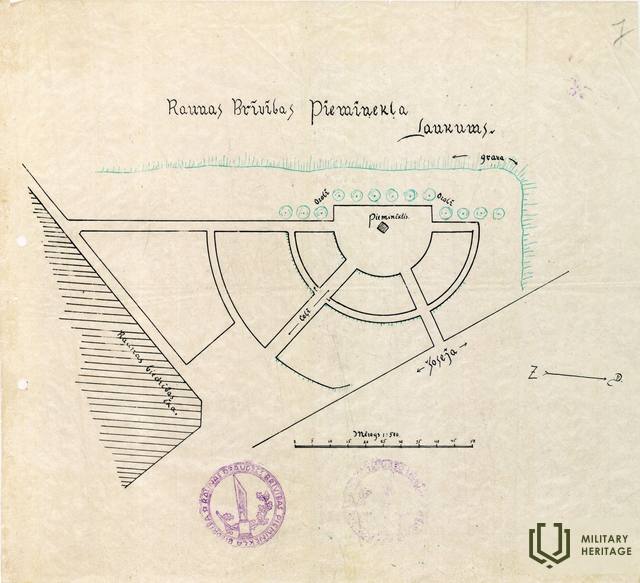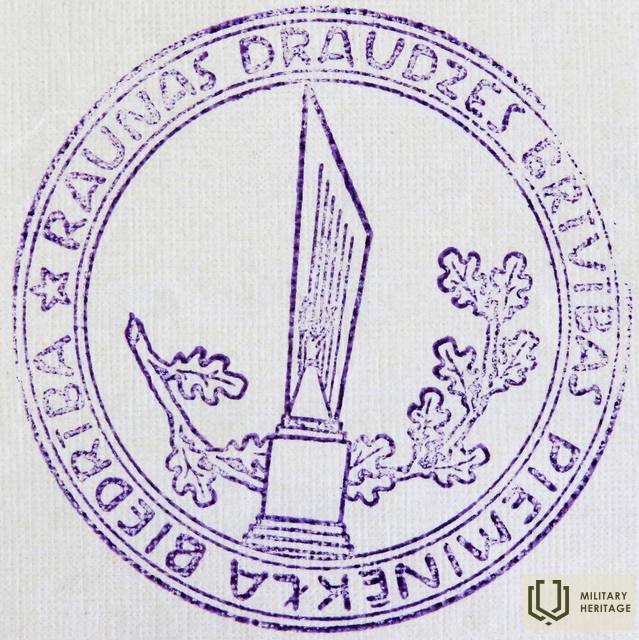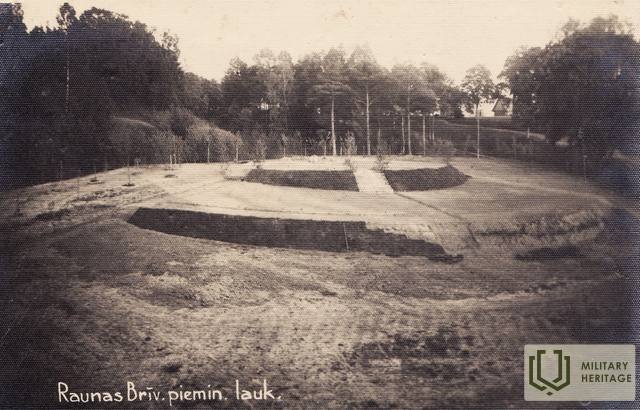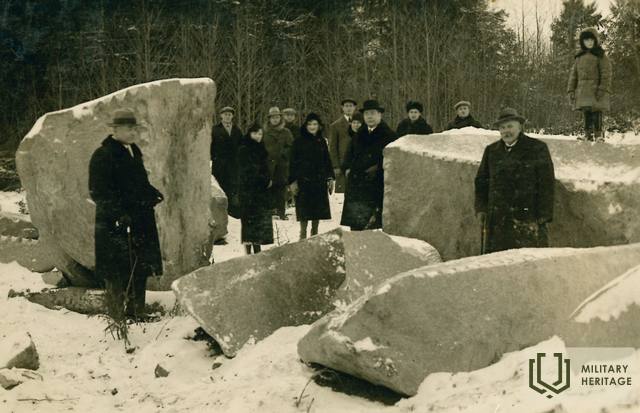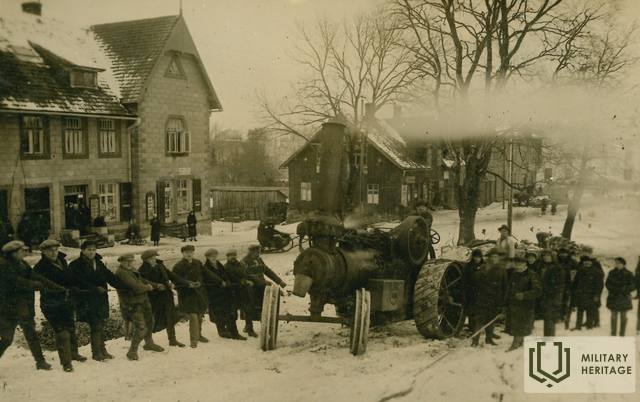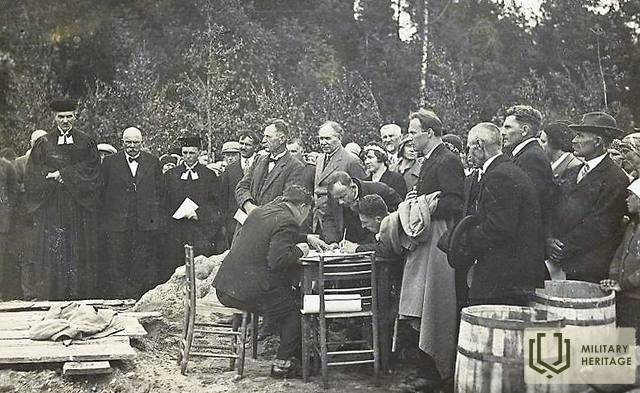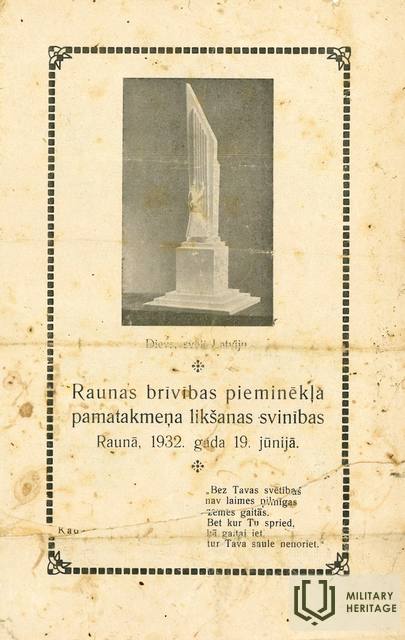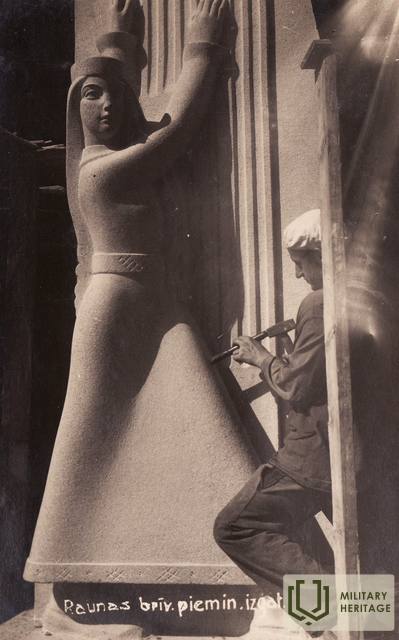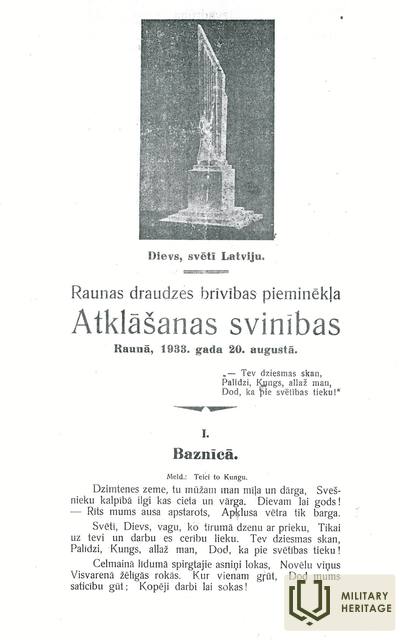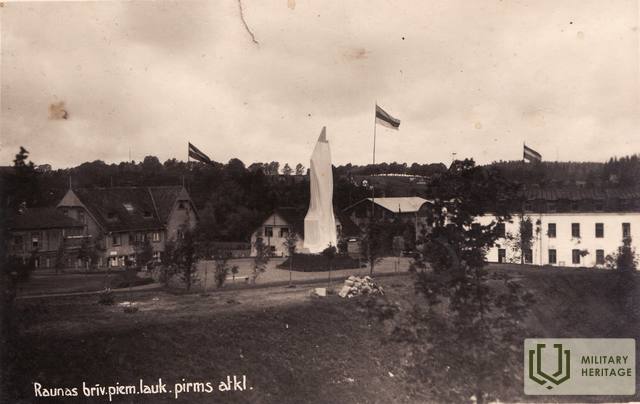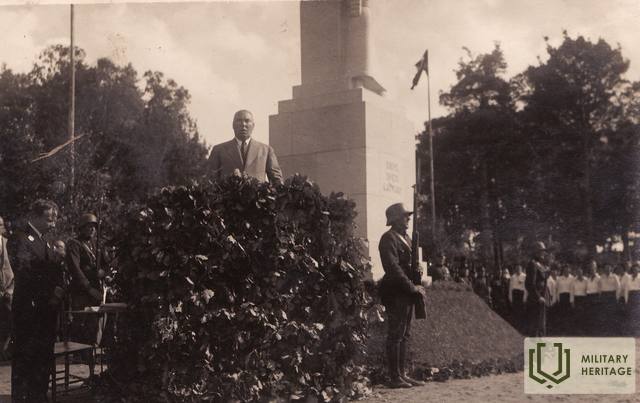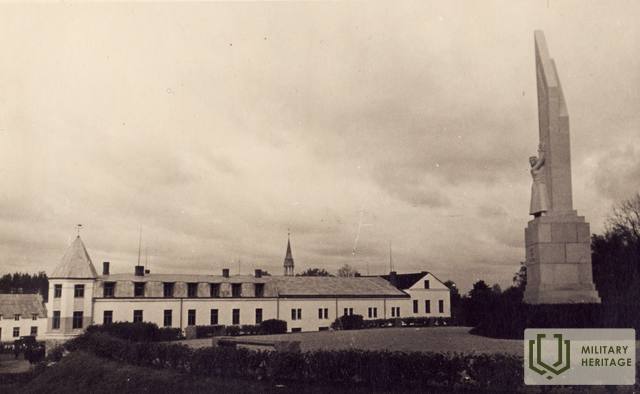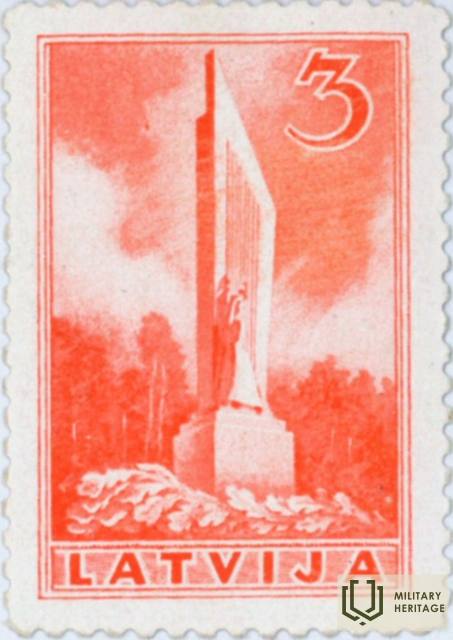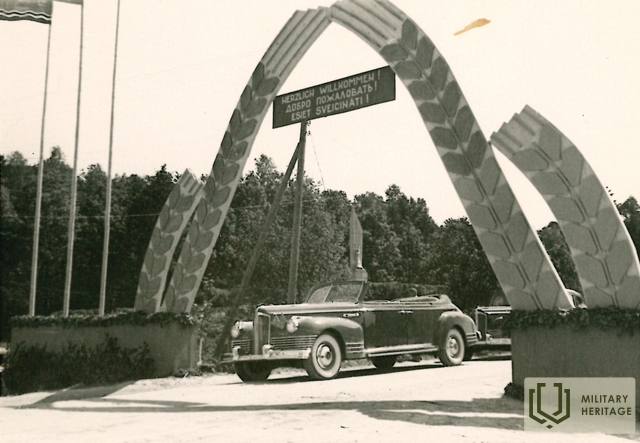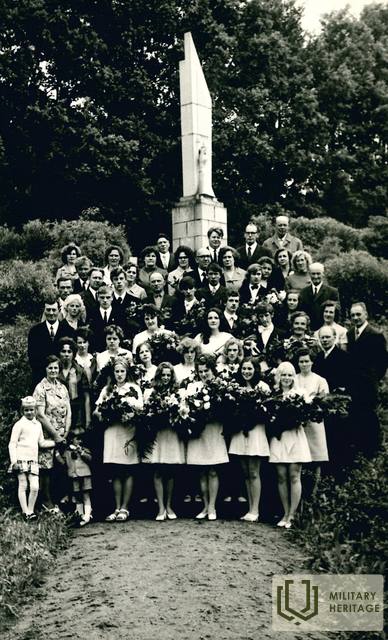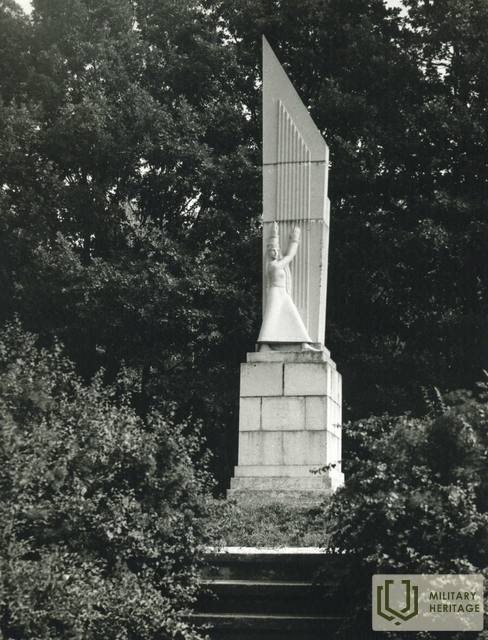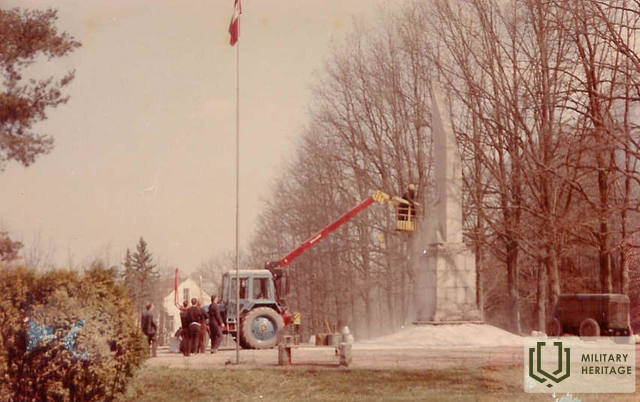Rauna Freedom Monument or Monument to the memory of the members of the Rauna parish who fell in the First World War and the Freedom Struggles
The origins of the idea for the Rauna Freedom Monument can be traced back to August 21, 1929, when the mayor of Cēsis and the head of Cēsis district invited the most prominent public figures of Rauna parish to a meeting, inviting them to honor the achievement of freedom and build a monument in Rauna.
A sum of 1200 LVL was allocated for this purpose from the capital of the Northern Latvia Liberation Struggle Memorial Committee. A temporary presidium consisting of three people was elected from among the gathered Rauna public workers, whose task was to popularize the idea of building the Freedom Monument and organize the involvement of other people.
On October 13, 1929, a meeting was convened, attended by representatives of various Rauna public organizations, who decided to form a new organization and named it the Rauna and Surroundings Liberation Monument Committee. Pastor Arvīds Treici was elected chairman of the committee, teacher Eduards Auks was elected treasurer, and J. Grīslis was elected secretary.
One of the first tasks of the new committee was to find a place to build a monument. The most advantageous and suitable place for the monument was chosen as a plot of land belonging to the Rauna Parish Council between the ruins of the Rauna Castle, the Agricultural Society House and the Riga Highway. Interestingly, according to information read in the press in the 1930s, the original and possible location of the monument is mentioned as Rauna Tanīsa Hill, which “would allow the monument to be seen from afar”.
The most difficult and time-consuming task of the committee was to raise the funds necessary for the construction of the monument. Donations were collected, bazaars, lotteries, events, theater performances were organized, as well as personal invitations were sent to various organizations to donate larger amounts of money. In total, about LVL 8,000 was collected for the construction of the monument and the arrangement of the square. The largest donors were the Northern Latvia Liberation Struggle Memorial Committee (LVL 1,200), Rauna Savings and Loan Society (LVL 1,669.50), Rauna-Baižkalna Dairy Farmers Society (LVL 550), Rauna Mutual Fire Insurance Society (LVL 350), and the Culture Fund (LVL 600). The remaining amount was collected from events and private donors.
In the autumn of 1930, representatives of the Rauna and Surroundings Liberation Monument Committee went to Riga to see the Secretary of the State President to view the works of the Riga Freedom Monument design competition. The attention of the Rauna residents was particularly attracted by the award-winning design “Es-dūr” by the young sculptor Kārlis Baumanis (Zemdega), which won the 3rd prize in the Riga Freedom Monument Competition. The idea behind the monument is based on the spear turning into a kokle, the fighting spirit merging with a song. After discussions with the author of the design, the Rauna and Surroundings Liberation Monument Committee decided at its meeting on 18 October 1931 to erect a monument in Rauna after the sculptor K. Baumanis (Zemdega), using local granite as the material. Stone suitable for the monument was found approximately 4 km from the centre of Rauna, near the former Lorenči semi-manor. One of the most difficult tasks was moving the heavy stones to Rauna.
In parallel, the committee also worked on the creation of the monument square – digging a mound, creating terraces, installing stairs, planting trees and shrubs. In the spring of 1932, the committee organized the planting of a memorial oak alley in the monument square. Each planted oak tree is a memorial to one of the members of the Rauna parish who died in the Freedom Struggle. Under each planted oak tree, a bottle was buried with the name of the deceased member of the Rauna parish and brief biographical data. On July 19, 1932, a ceremonial laying of the foundation stone of the monument took place. The foundation of the monument was buried approximately 10 feet deep, along with a solemnly signed deed, coins, newspapers and other items.
In order to more successfully implement the issue of financing the construction of the monument, the Rauna and Surrounding Area Liberation Monument Committee decided to become an official organization and register as the Rauna Parish Freedom Monument Society. On May 21, 1933, the board of the new society was elected. Pastor Arvīds Treicis became the chairman of the society, teacher Jēkabs Pinnis became the secretary, teacher Eduards Auka became the treasurer, doctor Rūdolfs Skaidrais became the member, and D. Muižnieks became the member of the chairman. One of the main tasks of the new board was to organize the opening celebration of the monument on August 20, 1933.
The opening ceremony of the Rauna Freedom Monument took place on August 20, 1933. The event began with a solemn service in the Rauna Church, where speeches were given by professor Voldemārs Maldonis, dean of the Faculty of Theology of the University of Latvia, Jaunpiebalga pastor Jānis Ozols, and Rauna parish pastor Arvīds Treicis. The service featured performances by choirs from the Rauna area under the direction of Rūdolfs Skaidrās and the orchestra of the 8th Daugavpils Infantry Regiment.
After the service, a ceremonial welcome of the President of Latvia, Alberts Kviesis, and the unveiling of the monument took place. The President of Latvia, Alberts Kviesis, General Krišjānis Berķis, the Head of the Cēsis District, Jānis Štucers, the Chairman of the Cēsis District Board, Kārlis Līkums, Archbishop Teodors Grīnbergs, the Dean of the Valka District, Kārlis Kundziņš, the Estonian Permanent Representative to Latvia, Jāns Melders (Jaan Mölder), the Rector of the University of Latvia, Jūlijs Auškāps, etc. arrived for the unveiling of the monument. After the ceremonial speeches and the unveiling of the monument, the celebration continued in the ruins of Rauna Castle, with the participation of choirs from Rauna and the surrounding area and the orchestra of the 8th Daugavpils Regiment. After the unveiling of the monument, the Rauna Parish Freedom Monument Society continued its activities, raising funds for further improvement of the monument square.
After the monument was unveiled, it became one of the centers of Rauna's social and cultural life and a symbol of Rauna. All major festivals and events of Rauna parish until 1940 were organized at the Freedom Monument. In the 1930s, it became a beautiful tradition for students of Rauna's central schools to lay flowers at the monument at the beginning of the school year.
During the Soviet years, the Rauna Freedom Monument was preserved, only the inscription “God, bless Latvia” on the monument was destroyed. During this time, no events were held at the monument, and its territory was unkempt and overgrown. Despite the fact that no events were held at the monument, the monument can be seen in many photographs taken during the Soviet period. This can be explained by the fact that the stairs in the monument square were often used for group photos. Several stories about the monument’s rescue from destruction and the people who took care of its preservation are still vivid in people’s memories. In the 1970s and 1980s, members of the Cēsis District Branch of the Latvian Horticulture and Beekeeping Society, Rauna’s First Organization, began cleaning up the monument’s territory. Despite the fact that gatherings at the monument were prohibited during the Soviet years, people secretly placed candles and flowers at the foot of the monument.
During the revival, in the second half of the 1980s, the monument became a symbol of freedom and independence, and various events were held here. For example, on November 18, 1988, the Raunas group of the Latvian People's Front held an event dedicated to the proclamation of Latvia at the monument, and the red-white-red flag again flew on the flagpole near the monument. Thanks to the activists of the Raunas group of the Latvian People's Front and the funds donated by residents, in the spring of 1989 the monument was cleaned, the stairs on the territory were repaired, and the historical inscription “God, bless Latvia” was restored, which was carried out by stonemason Ansis Rozenbergs.
The monument and its territory received a new lease of life in 2011, when, using funding from the LEADER program, the Rauna County Council cleaned up and improved the monument's territory and greenery, as well as restored the monument itself. Every year on November 11, candles are placed at the monument and the participants of the Freedom Struggle are honored at the moment of remembrance. In recent years, community bike rides have been organized from the Riga Freedom Monument to the Rauna Freedom Monument on May 4. Today, the monument is one of the brightest symbols of freedom in Rauna and Latvia.
Sarkane E. “Where Rauna…”, SIA “Latgales druka”, 2015.
Articles in periodicals
Rauna Library local history materials
Rauna Museum materials
Memories of Biruta Kunciņa, written on August 11, 2020
Memories of Ilona Rekmane, written on September 18, 2020
Related timeline
Related topics
Related objects
Freedom Monument in Rauna
The monument, created by sculptor Kārlis Zemdegs, is dedicated to the memory of the members of the Rauna parish who fell in World War I and the War of Independence.
As one of the unrealized variants of the Riga Freedom Monument project, it was unveiled on August 20, 1933. The 3rd President of the Republic of Latvia, Alberts Kviesis, attended the opening event.
The original name of the monument was "ES DŪR" - the motto - the spear turns into a kokle and the people are saved by the spirit of song. The base of the monument is decorated with the words of the hymn composed by Baumaņi Kārlis - "God, bless Latvia".
Before the monument was unveiled in 1933, the people of Raunė, while carrying out landscaping work around the monument, planted an oak alley and placed a capsule with the name of a fallen soldier under each oak tree. Later, in 1937, the names of the fighters were engraved on a white marble slab, which is placed in the church.
During the communist occupation, the inscription "God, bless Latvia" was removed from the pedestal. It was restored when the Revival began in June 1989.
Freedom Monument in Riga
The Freedom Monument was one of the central symbolic points of the Awakening events. On June 14, 1987, the human rights group Helsinki-86 organized an unauthorized public flower-laying ceremony at the Freedom Monument. Two months later, on August 23, Helsinki-86 called for a rally at the Freedom Monument on the 48th anniversary of the Hitler-Stalin Pact of August 23, 1939. During this rally, Soviet police beat and arrested demonstrators. In the following years, flower-laying ceremonies at the Freedom Monument became a part of all major demonstrations and other mass events .
Located in the center of Riga, on Freedom Square.
The Freedom Monument is one of the most outstanding monuments of Latvian history, architecture and art. Built according to the project of Kārlis Zāle with public donations. It was unveiled in 1935 as a symbol of the Latvian people's freedom and love of their homeland. Together with the Riga Brothers' Cemetery ensemble, it belongs to the most valuable examples of monumental architecture and sculpture.
The Freedom Monument expresses the ethical and aesthetic values of Latvian culture. The symbols reflect the philosophical essence of freedom and the historical ideas of the Latvian nation about the stages of the struggle for independence. They point to the embodiment of physical and spiritual strength. The heroic language tells the story of the Latvian people as self-reliant, active creators of history and the determinants of their own destiny.
In its place, there was originally a monument to Russian Tsar Peter I. During World War I, it was dismantled to be transported by ship to Petrograd. The ship was torpedoed by a German submarine, and it sank off the Estonian island of Vormsi. The Soviet occupation regime planned to demolish the Freedom Monument several times, but this did not happen.
Today, you can see one of the symbols of Latvia and observe the traditions of the army honor guard.
A tactile Freedom Monument has been created on the canal bank, next to the Freedom Monument. This special bronze miniature was created by sculptor Ivars Miķelsons on a scale of 1:50.




